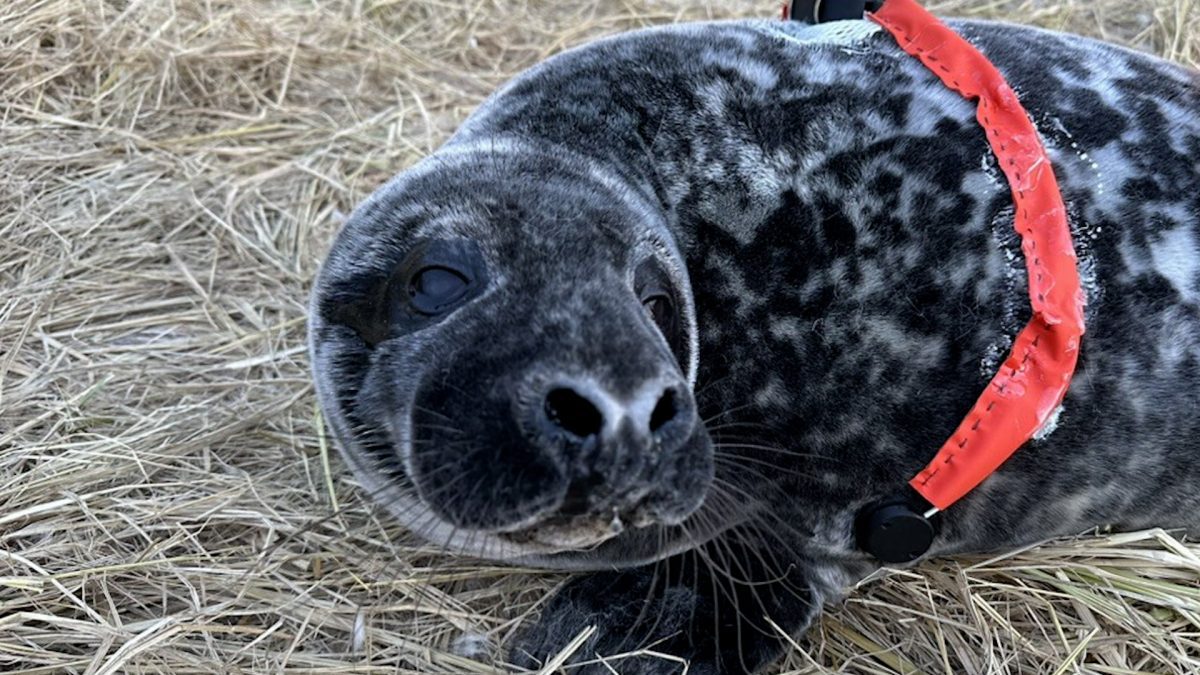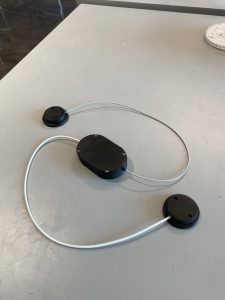Field research from the heart
 A research pilot program on Sable Island, Nova Scotia, is fitting heart monitors on grey seal pups to collect information on activity, heart rate, and EKG readings. ©Woods Hole Oceanographic Institution
A research pilot program on Sable Island, Nova Scotia, is fitting heart monitors on grey seal pups to collect information on activity, heart rate, and EKG readings. ©Woods Hole Oceanographic Institution February 14, 2025
Heart Monitors for seal pups are helping scientists track animal health
Images and captions, credits are here
Woods Hole, Mass. (February 14, 2025) -- Every winter, about 300,000-400,000 grey seals congregate on Sable Island - a remote location off the coast of Nova Scotia. They breed and give birth to pups, who stay with their mothers while they nurse for only 15-20 days and then must learn how to swim and fend for themselves.
Researchers from the Woods Hole Oceanographic Institution (WHOI) and its partners have spent the past several winter seasons in this remote location, studying how iron levels affect seal pup’s dive capacity and survival rates, among other research.

WHOI engineers adapted an off-the-shelf component to develop a prototype heart monitor for field research. ©Woods Hole Oceanographic Institution
But this year, a small pilot program is fitting heart monitors on some of the pups – essentially seal pup Fitbits -to collect information on activity, heart rate, and even EKG readings. “This data tells us a lot about the animal’s health and how much energy they’re expending and also tells us about how the pups are preparing and developing their diving abilities,” said Michelle Shero, a marine biologist at WHOI.
“Grey seals have large amounts of oxygen-carrying proteins acting as a sort of internal scuba tank so that they can make long underwater dives. The pups go from being nursed on land, to being suddenly weaned and having to transition to making a living in the ocean. They have to be able to hold their breath for long durations and slow their heart rate on dives so that they use their oxygen stores slowly,” she explained.
Previous heart rate loggers have either been invasive or required a person to stand within range of the seal with a receiver to get the data in real-time. But as things like fitness monitors and personal EKGs become smaller and better for humans, researchers are seeing advantages for monitoring animal health as well.
Shero worked with WHOI engineer Ben Weiss to modify and outfit a monitor that is very small, and has a long battery life and memory. “What makes this an exciting innovation is that we were able to adapt an off-the-shelf component in a highly creative application,” explained Weiss.
According to Shero, these initial trial monitors show promise, providing EKG readings and other data collection, including the duration between heartbeats. The team is also taking thermal videos of the pups while wearing the heart rate monitors, to continue to expand new methods for more hand-off monitoring of in-situ animal health.
“This project represents the kind of advancements in marine science that come out of collaborations between scientists and engineers,” said Weiss.
###
About Woods Hole Oceanographic Institution
Woods Hole Oceanographic Institution (WHOI) is a private, non-profit organization on Cape Cod, Massachusetts, dedicated to marine research, engineering, and higher education. Established in 1930, its mission is to understand the ocean and its interactions with the Earth as a whole, and to communicate an understanding of the ocean’s role in the changing global environment. WHOI’s pioneering discoveries stem from an ideal combination of science and engineering—one that has made it one of the most trusted and technically advanced leaders in fundamental and applied ocean research and exploration anywhere. WHOI is known for its multidisciplinary approach, superior ship operations, and unparalleled deep-sea robotics capabilities. We play a leading role in ocean observation and operate the most extensive suite of ocean data-gathering platforms in the world. Top scientists, engineers, and students collaborate on more than 800 concurrent projects worldwide—both above and below the waves—pushing the boundaries of knowledge to inform people and policies for a healthier planet. Learn more at whoi.edu.
